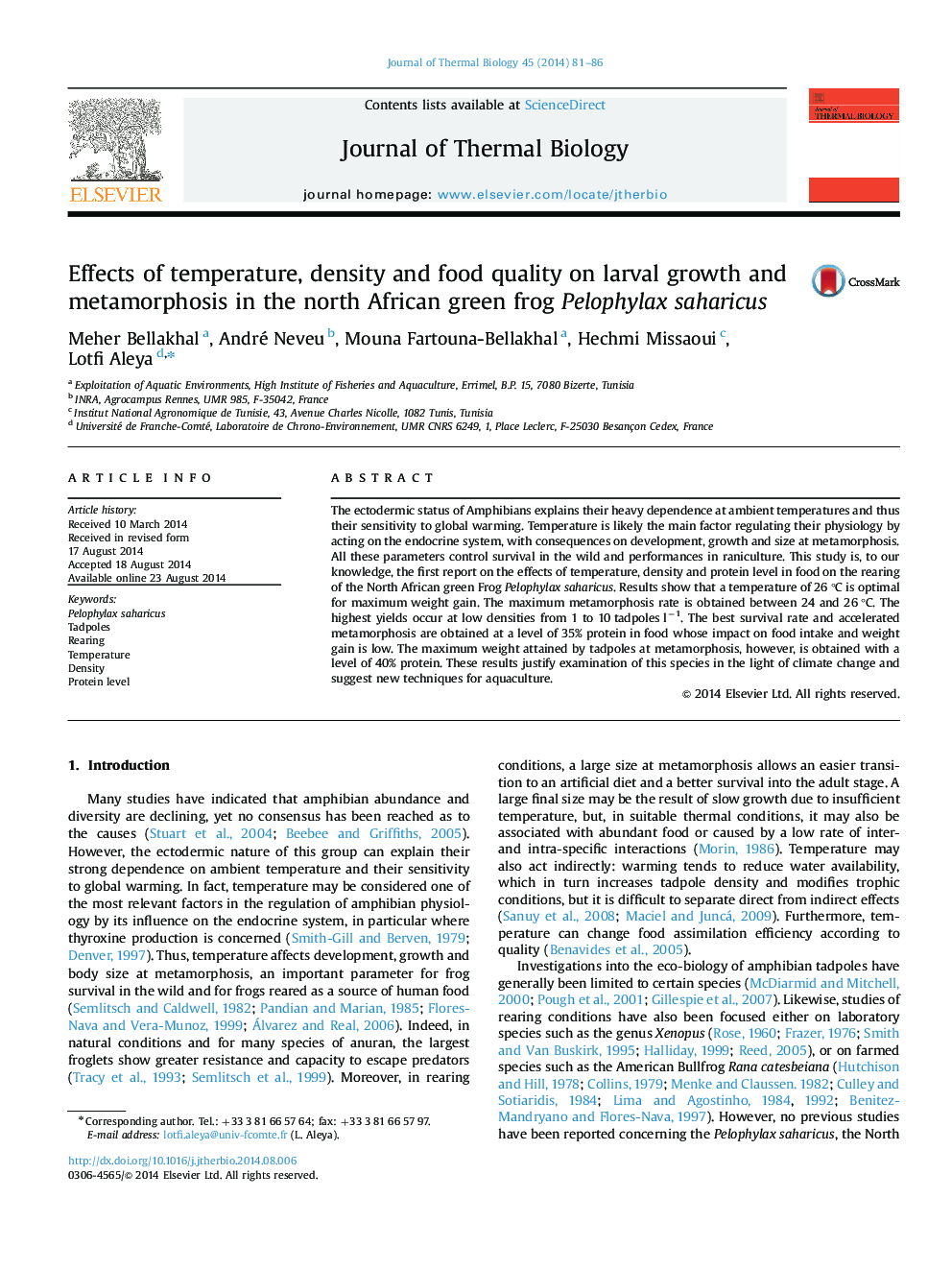| Article ID | Journal | Published Year | Pages | File Type |
|---|---|---|---|---|
| 2842883 | Journal of Thermal Biology | 2014 | 6 Pages |
•Tadpoles of the Sahara frog Pelophylax saharicus reared under controlled conditions.•26 °C is most advantageous for maximum weight gain.•Low density is favorable for maximum tadpole size.•High protein diet accelerates metamorphosis.
The ectodermic status of Amphibians explains their heavy dependence at ambient temperatures and thus their sensitivity to global warming. Temperature is likely the main factor regulating their physiology by acting on the endocrine system, with consequences on development, growth and size at metamorphosis. All these parameters control survival in the wild and performances in raniculture. This study is, to our knowledge, the first report on the effects of temperature, density and protein level in food on the rearing of the North African green Frog Pelophylax saharicus. Results show that a temperature of 26 °C is optimal for maximum weight gain. The maximum metamorphosis rate is obtained between 24 and 26 °C. The highest yields occur at low densities from 1 to 10 tadpoles l−1. The best survival rate and accelerated metamorphosis are obtained at a level of 35% protein in food whose impact on food intake and weight gain is low. The maximum weight attained by tadpoles at metamorphosis, however, is obtained with a level of 40% protein. These results justify examination of this species in the light of climate change and suggest new techniques for aquaculture.
